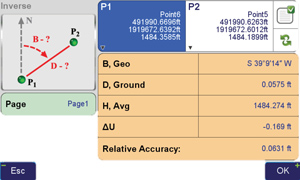Day 1 Observation Results
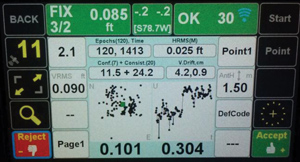
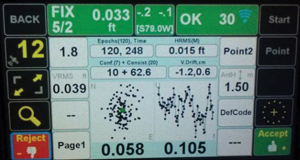
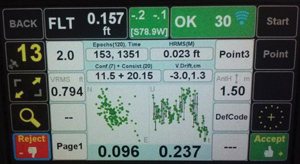
JAVAD TRIUMPH-LS –
Accidental Extreme Multipath/Interference Test
The following is an example of how well the JAVAD Triumph-LS deals with multipath and interference. The test was not conducted with any sort of scientific procedure or confirmation of results from an independent source. It was purely accidental as to how the test was even conducted but none the less the results amazed me and I wanted to share with others.
So the story goes: I was sitting at my kitchen counter playing around with DPOS on the LS and my 5 year old daughter was watching with some interest so I figured it was a good time to see if my daughter could figure out how to navigate the map screen. I went into the “collect” module and just went to next so it was in the “collect” action screen and allowed my daughter to start playing with the map. I just happened to have a job setup with corrections being received from the VRS/RTN network over my home WiFi connection and told my daughter to let me know if the solution type box turns green(Fixed solution). I was talking to my wife when I heard “Daddy its green” and looked at the screen and low and behold 4 out 6 engines were fixed!Without really thinking I had my daughter start observing the position(hit start button) and before I knew it the LS was collecting data in my house!!The RTK verification was “with reset” and I had it set to 120 epochs with 2 engines set for verify. Amazingly enough the LS finished the collection process (definitely took a little bit) and had results!I figured OK big fluke no way that just happened so I had my daughter start another observation expecting it to possibly get a result but I did not think it would be even close to the first point. Well it turns out that the results of the 2 points were impressive so I went ahead and had another observation taken. I repeated the observations 1 week later and about 7 hours earlier and the results were again impressive for the situation.
The following are pictures of the point observations, COGO inverses, and average results.
Day 1 Observation Results



Day 1 Average Results and inverses:
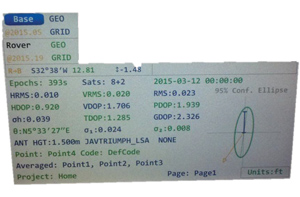
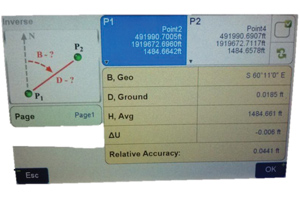
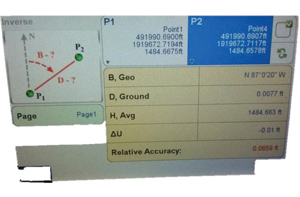
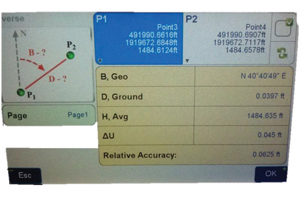
Day 1 Point observation inverses:
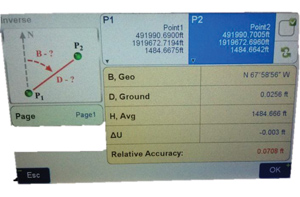

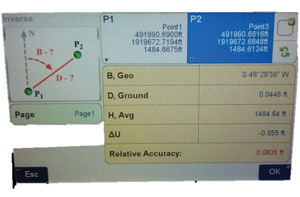
I personally was impressed with the results considering the observations were in a house. I don’t even know where to begin with the multipath issues with GNSS in a building. The location the LS observed these points was on a counter top about 12 ft. from south wall with a door window and a large picture window. The east wall has no windows(interior wall) so no satellite signals from that direction, the west wall was about 10 ft. away with 2 windows (one 2½x5 ft. and one 2x2 ft.), and the north wall was about 12 ft. away with a small door window. I would provide pictures but my wife was not too keen on that idea!Anyway the room has no skylights and 8 ft. ceilings so as you can guess they was not much for clear signals and the LS warning light was on the entire time indicating severe interference in the GNSS signals. In my opinion this is an excellent example of the LS’s ability to isolate interference and eliminate it from an observation. If it can produce repeatable results in a house then with proper RTK field procedures I can definitely feel confident in my results on projects particularly in the areas that have satellite signal interference from sources other than multipath. Another little detail is the fact that my corrections were from a VRS system that is provided by my Minnesota DOT and as many already know there is a big difference between a base on site and RTN/ VRS as far as speed and quality of fixed solutions. I won’t get into details but suffice it to say that a base on site would have been less surprising to me as far as fixed solutions with severe multipath and interference. I would like to thank Minnesota DOT for providing such a robust VRS system for FREE!!!If your state provides a RTN/VRS system like Minnesota then make sure and thank your provider as you have it better than many states!!!
Well there you have an example of what JAVAD Triumph-LS can do, but PLEASE DO NOT use this test as a reason to start pushing your RTK into buildings or ridiculously bad locations for GNSS, after all it is just another tool not the great black box that can measure anything in any environment-use your professional judgement!
BTW: All coordinates and projection info were eliminated from pictures to protect the innocent and remain anonymous!!
Day 2 Observation Results:
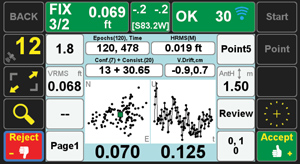
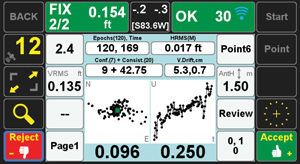
Day 2 Average Results and inverses:
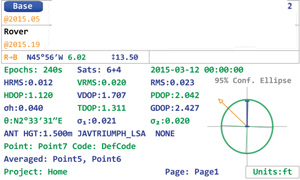
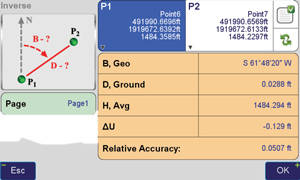
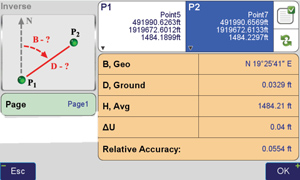
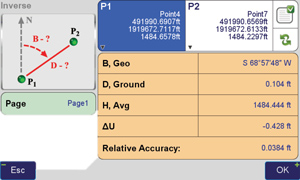
Day 2 Point observation inverse:
